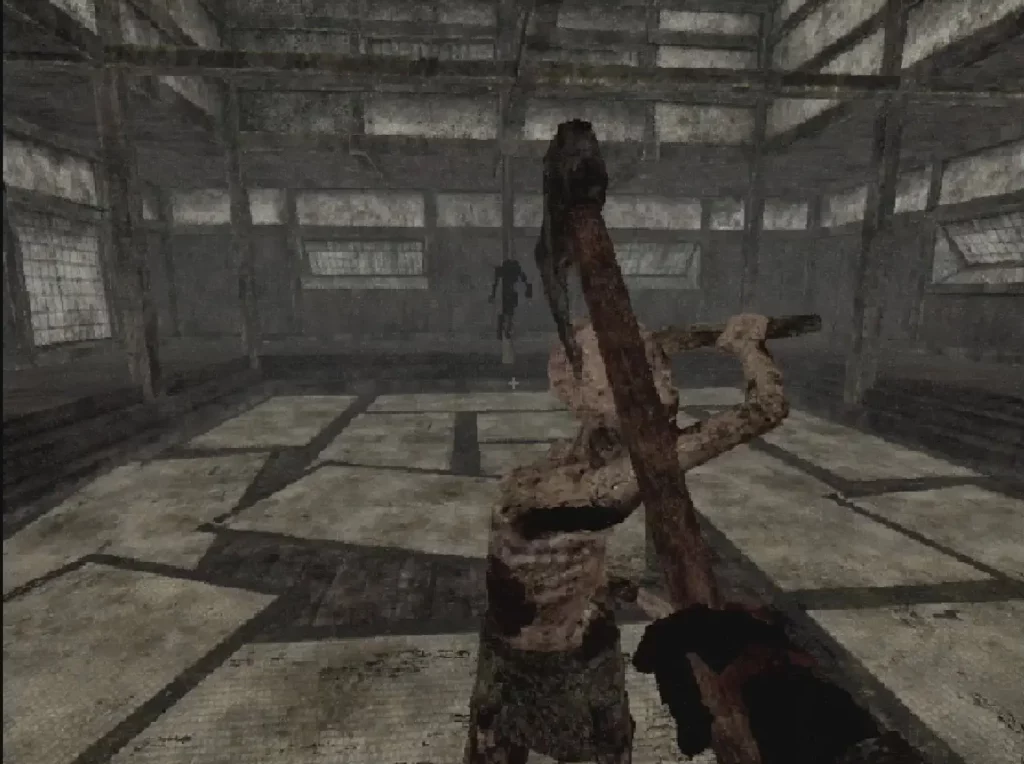Labyrinth of the Demon King presents itself as a brutal, despondent dungeon crawler set within the ruins of feudal Japan. Players assume the role of an ashigaru, a humble foot soldier seeking vengeance for the slaughter of their lord and army at the hands of the demon king. The odds appear insurmountably stacked against the protagonist. Armed with only a broken katana and hampered by limited stamina, players must navigate a labyrinth comprised of depressing, confusing corridors and nondescript chambers reminiscent of the PlayStation One era. The demon king’s presence adds further torment through arcane puzzles and repulsive yokai creatures.

This grim 15-hour adventure belongs to a new wave of dungeon crawlers heavily influenced by the King’s Field series, FromSoftware’s dark fantasy precursor to the Dark Souls franchise. While Lunacid popularised this revival, Labyrinth of the Demon King trades the former’s VHS-inspired fantasy for an oppressive blend of Buddhist folklore and survival horror atmosphere, while incrementally advancing the combat complexity typically found in similar titles.
Unforgiving Combat That Tests Resolve
The combat system initially presents a steep learning curve. The game begins with a mandatory tutorial, yet many players may still struggle with the mechanics. The ashigaru moves at a painfully slow pace, with a stamina meter that depletes rapidly with each poorly timed swing of the katana. Dodging once preserves stamina, but attempting a second dodge within a four-second cooldown severely penalises the player. Being struck by any of the maddened creatures—whose attacks can only be parried within an extremely brief window—can cause the player character to lose composure, virtually guaranteeing death.
The discovery of the kick mechanic proves to be a turning point. Using a kick staggers enemies long enough to land a risk-free strike, significantly reducing the tension of encounters. Eventually, the combat reveals itself as a test of maintaining composure during frightening confrontations. Once this concept clicks—along with understanding other game systems such as the bonfire-inspired save mechanism and the strategic importance of retreat—what initially seemed frustrating transforms into a compelling experience.
A Labyrinth of Atmospheric Horror
The demon’s maze comprises four major areas which, apart from occasional refreshing outdoor sections, maintain a consistent aesthetic. Every surface appears coated in an indeterminate brownish-grey slime. Doorways and sometimes entire corridors become blocked by mysterious, breathing mounds of gore. Many doors are inaccessible, either jammed or locked. Despite the overwhelmingly bleak and repetitive environment, the illogically winding passageways and ruined chambers leave a lasting impression, enabling players to develop a mental map of the labyrinth by the conclusion.
Both enemies and NPCs feature deliberately primitive 3D styling that renders them difficult to identify. For instance, a merchant cat might not immediately register as feline to players. Regarding demons, the chunky pixel art sacrifices detail for a generalised sense of corruption—combating these entities feels like battling against masses of horrific sentient growths, which proves more terrifying than if they were rendered with meticulous polygonal detail.
Deliberately Degraded Aesthetics
The artistic direction deserves special attention. Steam witnesses weekly releases of horror games that exploit the unstable unreality of mid-1990s 3D graphics, using them as shorthand for creating a disorienting horror effect beyond the reach of modern presentation. However, Labyrinth takes this approach further by making its graphics even murkier and more degraded than the ’90s material it references. This not only increases the frightfulness and inscrutability of enemies but also gives the game a homebrew ruthlessness reminiscent of video nasties. The overall impression is of something that would have been considered unmarketable in the ’90s—it possesses an aura of forbidden content.
Gradual Mastery Amidst the Darkness
Despite the initial terror inspired by the beasts and hallways, mid-game typically sees players feeling more confident. A variety of upgradeable weapons becomes available, ranging from the starting katana to an otsuchi (an extremely heavy hammer), a Great Dao (a massive sword), and various naginatas, axes, spears—even a rifle. Each weapon offers different attack speeds and stamina considerations. Additionally, talismans provide both offensive and defensive capabilities, though they’re easy to overlook during gameplay.

The difficulty curve gradually eases past the halfway mark, primarily due to increased familiarity with the combat system. Upgrading health and particularly stamina proves beneficial, as does learning the movement patterns of the Nuribotoke, a stalking figure modelled after iconic horror game pursuer archetypes.
Puzzles That Test Observation
The game features a modest number of puzzles, all following a certain internal logic, typically requiring extensive backtracking across the map. Player experiences with these challenges vary significantly—some puzzles prove simple for certain players while confounding others. However, all puzzles remain solvable for reasonably observant players. Many clues appear in scrolls scattered throughout the world, though reading these can be as unsettling as exploring the corridors—particularly due to disturbingly detailed descriptions of the Buddhist Eight Hells.
Labyrinth of the Demon King represents primarily the work of a single developer, giving it the quality of a productive obsession. This individual creative vision allows for an unusually disturbing experience that might have been diluted by committee development. Completing the game brings an overwhelming sense of relief at no longer needing to traverse those corridors with their mysterious drones and wheezing denizens. Nevertheless, it’s an experience worth enduring at least once—possibly the most potent weird horror title likely to emerge in 2025.
